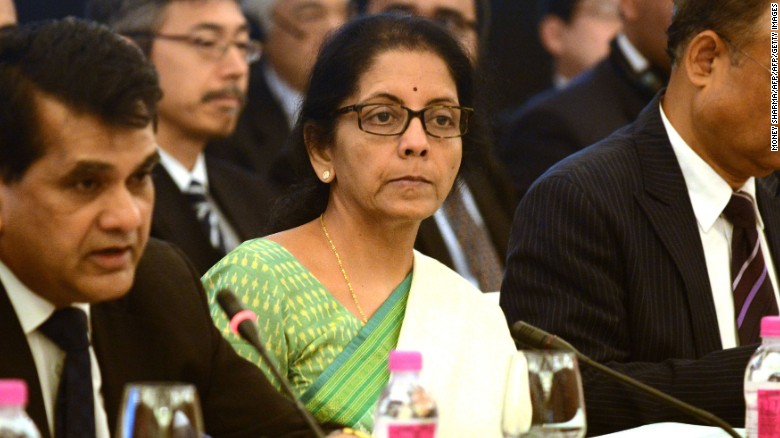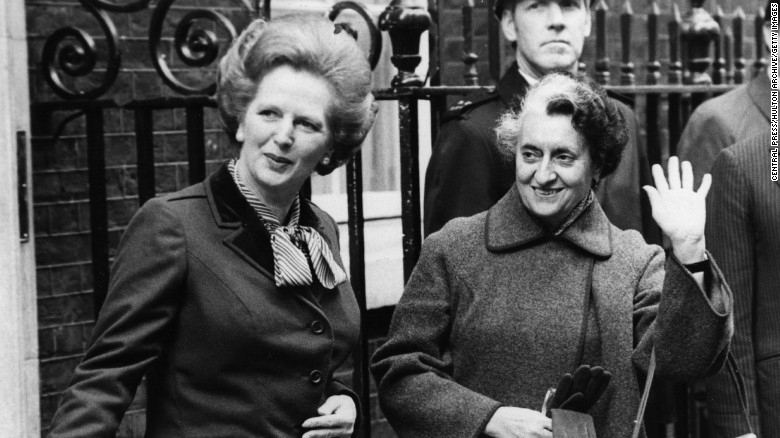Of the nine new ministers India's Prime Minister Narendra Modi appointed to his cabinet this month, it was one that led the headlines: his choice of defense minister.
Earlier this month, the country's army chief, General Bipin Rawat, reiterated the threat of a "two-front war," namely the possibility of a parallel conflict with China and Pakistan.
Sitharaman's immediate security challenges are evident.
Pakistan
is in political churn after the ouster of its elected Prime Minister
Nawaz Sharif, ostensibly for an anti-corruption case, but one described
by several pro-democracy commentators as a 'judicial coup' backed by the all-powerful Pakistani military.
These domestic fault-lines in Pakistan could cause real tremors across the border in India.
Sharif
was a strong advocate of dialogue with India; now, with the civilian
establishment weakened and the Pakistani army potentially calling the
shots on foreign policy, India must prepare for any number of
possibilities, including a greater surge in terrorist violence.
In 2016, a total of 64 Indian soldiers were killed in terrorist assaults in Jammu and Kashmir,
the highest figure in six years; the political uncertainty in Pakistan
pretty much closes the prospect of any effective dialogue between the
two countries at the moment. So, Sitharaman will have to be alert to the
possibility of those numbers increasing.
The China threat
With China, India is fighting a two pronged-battle. Its road and infrastructure projects are seen in India to be a sophisticated economic cloak thrown over marauding neo-imperialism.
Sitharaman will have to contend with the dare of China's One Belt, One
Road Initiative (OBOR) -- an audacious network of land and sea routes
that seeks to connect Asia, Europe, Africa and the Middle East in a
modern, magnified version of the Silk Route.
What irks India is that part of the OBOR known as the China Pakistan Economic Corridor runs through Gilgit-Baltistan, territory that India sees as sovereign and illegally occupied, all the way to the Gwadar deep-sea port in Pakistan.
India skipped the China-hosted OBOR summit and is the only South Asian country to not sign its framework agreement.
Sitharaman's management of India's relationship with China will be much trickier than managing Pakistan.
India and China are home to 36% of the world's population and a conflict of any kind could be catastrophic.
But China is also India's largest business partner with a bilateral trade worth more than 70 billion dollars.
In
August, the Indian government scored a diplomatic win with China in a
long-running border dispute, that at one point, saw soldiers from both
countries locked eyeball-to-eyeball in the mountain kingdom of Bhutan.
The situation had erupted after the Chinese expanded a road in territory Bhutan, a close ally of India, claims as its own.
Modi
indicated he would skip a multilateral forum of the BRICS countries
(Brazil, Russia, India, China and South Africa) in Xiamen, if China's
bulldozers did not stand down. On the eve of the summit, the status quo
was restored, and troops from both sides retreated.
At the BRICS summit, a first of its kind resolution was passed
that bracketed Pakistan-headquartered terror groups like the
Lashkar-E-Taiba and the Jaish-E-Mohammad with global terror groups, such
as the Islamic State and al-Qaeda.
But
China seemingly reneged on this commitment in less than a week,
praising Pakistan for having a "clear conscience" on fighting terrorism.
India's new defense
minister will have to contend with the reality of Pakistan being "a
client state of China" -- as one Indian official wryly called it -- a
virtual Chinese colony in a post-colonial Asia.
Gender bias
While
she hits the ground running with these external challenges, Sitharaman,
known for her no-nonsense persona, may have to fight a battle of a
slightly different kind on home turf -- the harsh scrutiny reality of
sexism.
At 58, she is
India's first full-time woman defense minister and heads a military that
is 1.4 million strong and still mostly made up of men.
She earned her spurs as India's commerce minister when she led some prickly negotiations at the World Trade Organization (WTO).
Yet,
no one -- in the media or her Bharatiya Janata Party -- could have
forecast that the former spokeswoman of her party, who studied in a
left-leaning university but always described herself as a
'free-thinker', would grab the coveted and powerful defense post.
Her
appointment is as much about smashing a rock through the glass ceiling
as it is about Prime Minister Narendra Modi's panache for audacity and
surprise.
"Modi has a
knack for thinking out of the box and confounding his critics," argues
Manoj Ladwa, a party strategist who oversees communication and strategy
for the BJP.
"Appointing
Sitharaman, who was until not so long ago a political novice and an
outsider, sends all the right signals. It also speaks volumes of her
capability and potential, as winning Modi's trust is never easy," Ladwa
told me.
In a historic
first, India's cabinet committee on security -- the country's most
powerful decision making group -- will now have two women: foreign
affairs minister Sushma Swaraj and Sitharaman.
The
only other woman to have ever led the defense ministry is Indira
Gandhi, the former Prime Minister, who held the defense portfolio for a
period of time.


No comments:
Post a Comment